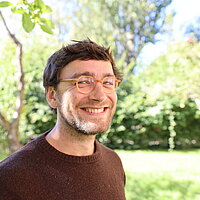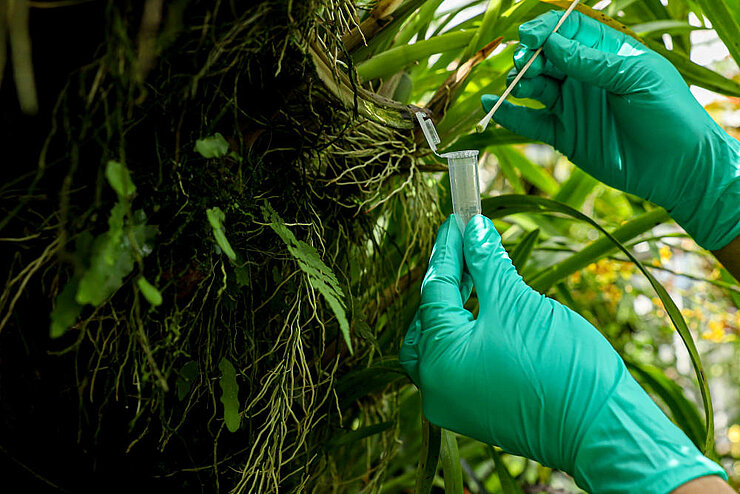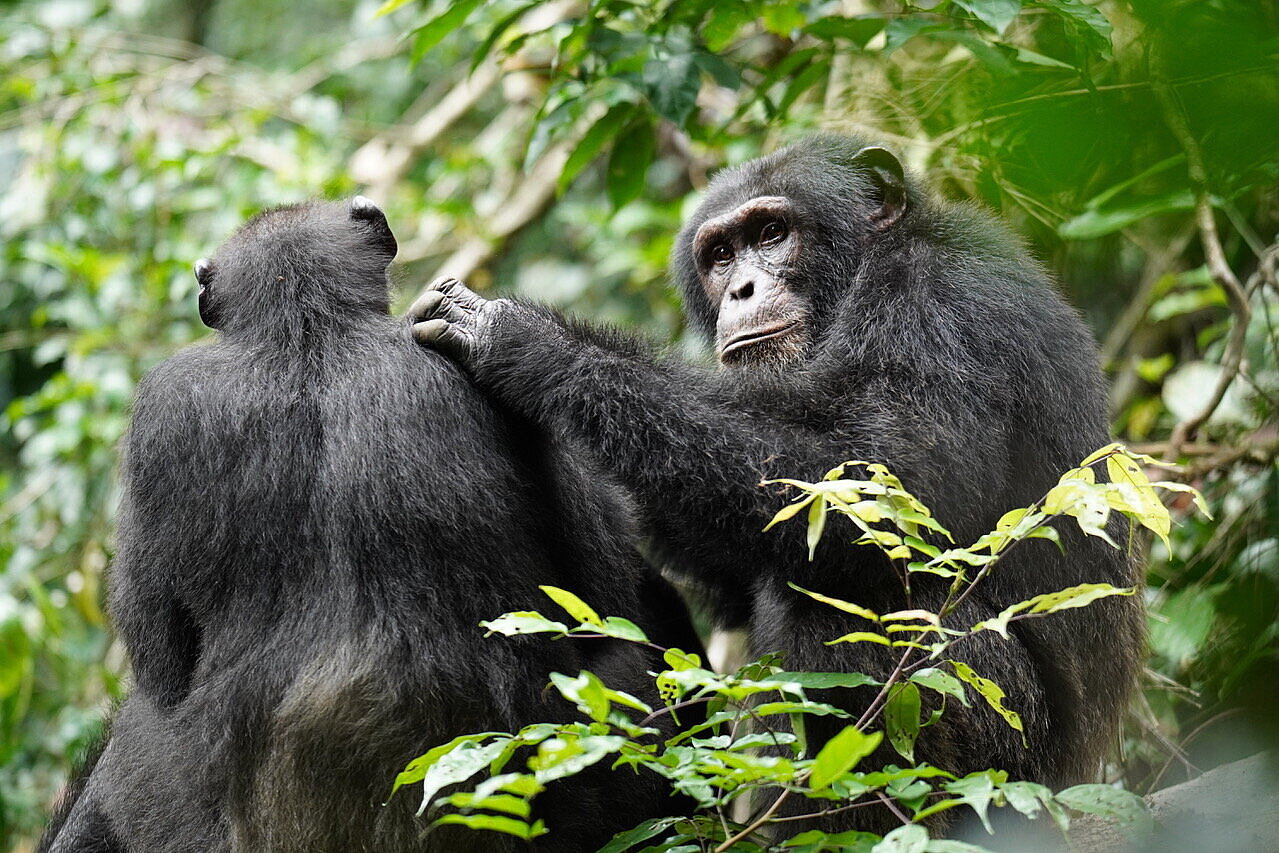
Our Research

Humans are changing our planet at unprecedented rates; temperatures are rapidly rising, human activities in remaining animal habitats are increasing, and the biomass of animals on the planet is estimated to have declined by more than 85%, as humans and their livestock increased. In the face of these rapid changes, the composition of remaining animal communities is shifting. The altered composition of these communities has cascading impacts on these animals’ behaviour and ecology. Rich communities of (micro-) organisms are found within and on each of these animals, while the animals, in turn, live in complex social groups and interact with other animal species through trophic links, such as predator-prey relationships, as well as diverse communities of vectors. Transmission of microorganisms sometimes occurs through these interactions, both between animals of the same species, but between those of different species as well. Humans are increasingly part of these interaction networks and pathogen transmission from animals to humans is occurring at increasing rates. Indeed, emerging zoonotic disease are an increasing threat to human health and most of these diseases have their origins in wildlife. Microorganisms and their associated diseases also influence animal populations’ persistence and conservation, with some spilling over to animals from humans as well. The research group ‘evolutionary community ecology’ explores how the changing composition of animal communities has cascading impacts on their microbial communities, diseases, and rates of transmission, including to humans.
Recent practical and theoretical advances in the field of community ecology provide an opportunity to identify and better understand the interactions relevant to the emergence and spread of pathogens in these changing contexts. The group will aim to develop and use flexible modelling frameworks for incorporating these multiple scales of biological organization, from within hosts, to landscape and regional processes, now allow for these processes to be disentangled. This is driven by the incorporation of an evolutionary framework, which provides data to detect which of these processes drive community assembly at various spatial and temporal scales. Indeed, analyses of the phylogenetic structuring of hosts and microorganisms can reveal patterns of selection and interactions between microorganisms, while phylogenetic analyses can reveal the histories of host-switching or codivergence. Ignoring animal communities and between species interactions can have dramatic unintended consequences for management efforts.
Links between biodiversity and human health remain contentious. On the one hand, high levels of animal biodiversity are predicted to harbor high microbial diversity, some of which may be pathogenic to humans. On the other hand, high levels of biodiversity have, particularly at small and intermediate scales, been shown to decrease the risk of some diseases for humans. For example, the dilution effect hypothesizes that the transmission of specific pathogens may increase as biodiversity declines, with the number of suitable hosts declining as biodiversity increases. Despite the appeal for universal rules linking biodiversity, habitat disturbance and disease risk, such patterns have not emerged. Rather, there is increasing awareness that local data on animal biodiversity, their microbial communities, and rates of transmission are needed to quantify context specific disease risk to inform local disease mitigation strategies. Thus, data on the distribution of hosts and their microorganisms is the foundation for understanding of the dynamics of disease emergence risk in our changing world. The emerging field of eDNA, which leverages high-throughput sequencing technologies to generate sequence information about hosts and microbes at large scales, is used by the group to bring the field of evolutionary community ecology to bear on the critical topic of disease emergence risk.
Interested in joining the Evolutionary Community Ecology group? Get in touch as we are looking to hire a technician, post doc, and maybe a PhD student.
Our Research

Humans are changing our planet at unprecedented rates; temperatures are rapidly rising, human activities in remaining animal habitats are increasing, and the biomass of animals on the planet is estimated to have declined by more than 85%, as humans and their livestock increased. In the face of these rapid changes, the composition of remaining animal communities is shifting. The altered composition of these communities has cascading impacts on these animals’ behaviour and ecology. Rich communities of (micro-) organisms are found within and on each of these animals, while the animals, in turn, live in complex social groups and interact with other animal species through trophic links, such as predator-prey relationships, as well as diverse communities of vectors. Transmission of microorganisms sometimes occurs through these interactions, both between animals of the same species, but between those of different species as well. Humans are increasingly part of these interaction networks and pathogen transmission from animals to humans is occurring at increasing rates. Indeed, emerging zoonotic disease are an increasing threat to human health and most of these diseases have their origins in wildlife. Microorganisms and their associated diseases also influence animal populations’ persistence and conservation, with some spilling over to animals from humans as well. The research group ‘evolutionary community ecology’ explores how the changing composition of animal communities has cascading impacts on their microbial communities, diseases, and rates of transmission, including to humans.
Recent practical and theoretical advances in the field of community ecology provide an opportunity to identify and better understand the interactions relevant to the emergence and spread of pathogens in these changing contexts. The group will aim to develop and use flexible modelling frameworks for incorporating these multiple scales of biological organization, from within hosts, to landscape and regional processes, now allow for these processes to be disentangled. This is driven by the incorporation of an evolutionary framework, which provides data to detect which of these processes drive community assembly at various spatial and temporal scales. Indeed, analyses of the phylogenetic structuring of hosts and microorganisms can reveal patterns of selection and interactions between microorganisms, while phylogenetic analyses can reveal the histories of host-switching or codivergence. Ignoring animal communities and between species interactions can have dramatic unintended consequences for management efforts.
Links between biodiversity and human health remain contentious. On the one hand, high levels of animal biodiversity are predicted to harbor high microbial diversity, some of which may be pathogenic to humans. On the other hand, high levels of biodiversity have, particularly at small and intermediate scales, been shown to decrease the risk of some diseases for humans. For example, the dilution effect hypothesizes that the transmission of specific pathogens may increase as biodiversity declines, with the number of suitable hosts declining as biodiversity increases. Despite the appeal for universal rules linking biodiversity, habitat disturbance and disease risk, such patterns have not emerged. Rather, there is increasing awareness that local data on animal biodiversity, their microbial communities, and rates of transmission are needed to quantify context specific disease risk to inform local disease mitigation strategies. Thus, data on the distribution of hosts and their microorganisms is the foundation for understanding of the dynamics of disease emergence risk in our changing world. The emerging field of eDNA, which leverages high-throughput sequencing technologies to generate sequence information about hosts and microbes at large scales, is used by the group to bring the field of evolutionary community ecology to bear on the critical topic of disease emergence risk.
Interested in joining the Evolutionary Community Ecology group? Get in touch as we are looking to hire a technician, post doc, and maybe a PhD student.
Dr Jan Frederik Gogarten
Animals and microorganisms do not exist in isolation. Rather they exist in complex communities that impact many aspects of their biology and evolution. Understanding how those interactions shape these communities creates opportunities to better understand disease ecology and emergence.
![[Translate to English:] Dr. Jan Frederik Gogarten Portrait Jan Frederik Gogarten](/fileadmin/_processed_/a/7/csm_Jan_Frederik_Gogarten_348cafdb2d.jpg)
Jan Gogarten is a wildlife disease ecologist who recently founded the Evolutionary Community Ecology Research Group at the Helmholtz Institute for One Health in Greifswald. He was elected to the Global Young Academy in 2023 and has showcased a commitment to increasing the diversity of perspectives active in academia. He has worked in two biodiversity hotspots in Uganda and the Ivory Coast for the last decade, with publications on a broad range of topics across the fields of ecology and evolutionary biology, as well as microbiology and virology, highlighting his commitment to the transdisciplinarity needed for developing the One Health framework. The emergence of pathogens from ecosystems can have drastic consequences for humanity and at the same time, disease plays a critical role in regulating wildlife populations and their long-term conservation. Jan’s research seeks to build a basis for conservation policy aimed at living with biodiversity in a sustainable manner, both by understanding the processes that influence and maintain animal and microbial diversity in ecosystems, while developing strategies to understand and mitigate disease emergence in human and wildlife populations. To this end, he has developed an environmental DNA toolkit for studying hosts and pathogens at landscape scales, as well as non-invasive approaches for generating genomic data from hosts and their pathogens.
Jan Gogarten is broadly interested in health topics and especially in the factors influencing the composition of communities of hosts across landscapes, but also the communities of microorganisms within these hosts. He combines these types of data provides to provide insights into disease emergence and the transmission process between hosts and species, particularly coupling this with a phylogenetic scaffolding. He often works with wild non-human primates and utilizes a diverse molecular toolkit including metabarcoding, environmental DNA, and hybridization capture.
Jan studied Biology and Anthropology at McGill in Canada and went on to a master’s degree in Biological Anthropology at Stony Brook. He completed his PhD in Biology at McGill in 2017 with Drs. Jonathan Davies and Colin Chapman. During his PhD he was affiliated with the RKI and the MPI for Evolutionary Anthropology and worked closely with the Tai Chimpanzee Project and Drs. Roman Wittig, Fabian Leendertz, and Sébastien Calvignac-Spencer. He went on to a postdoc position at Columbia University working with Drs. Thomas Briese and Ian Lipkin, followed by a postdoc at the RKI as part of the DFG research group ‘Sociality and Health in Primates’ exploring the interplay of sociality and microbial diversity working with Sébastien Calvignac-Spencer.
Selected Publications
1. Lynggaard C, Calvignac-Spencer S, Chapman CA, Kalbitzer U, Leendertz FH, Omeja PA, Opito EA, Sarkar D, Bohmann K, Gogarten JF. (2023) Extensive tropical vertebrate diversity discovered through swabbing of environmental DNA from leaves. Current Biology. 33, R829–R854. DOI: 10.1016/j.cub.2023.06.031
2. Gogarten JF, Rühlemann M, Archie E, Tung J, Akoua-Koffi C, Bang C, Deschner T, Muyembe-Tamfun J-J, Robbins MM, Schubert G, Surbeck M, Wittig RM, Zuberbühler K, Baines JF, Franke A, Leendertz FH, Calvignac-Spencer S. (2021) Primate phageomes are structured by superhost phylogeny and environment. Proceedings of the National Academy of Sciences of the United States of America. 118: e2013535118. DOI: 10.1073/pnas.2013535118
3. Gogarten JF, Davies TJ, Benjamino J, Gogarten JP, Graf J, Mielke A, Mundry R, Nelson MC, Wittig RM#, Leendertz FH, Calvignac-Spencer S. (2018) Factors influencing bacterial microbiome composition in a wild non-human primate community in Taï National Park, Côte d’Ivoire. The ISME Journal. 12: 2559-74. DOI: 10.1038/s41396-018-0166-1
4. Jahan M, Lagostina L, Gräßle T, Couacy-Hymann E, Kouadio L, Kouakou VK, Krou HA, Mossoun A, Patrono LV, Pléh K, Steiner JA, Yves N, Leendertz FH, Calvignac-Spencer S, Gogarten JF. (2023) Fly iDNA suggests strict reliance of the causative agent of sylvatic anthrax on rainforest ecosystems. Environmental DNA. DOI: 10.1002/edn3.401.
5. Gogarten JF, Düx A, Mubemba B, Pléh K, Hoffmann C, Mielke A, Müller-Tiburtius J, Sachse A, Wittig RM, Calvignac-Spencer S, Leendertz FH. (2019) Tropical rainforest flies carrying pathogens form stable associations with social non-human primates. Molecular Ecology. 28: 4242– 4258. DOI: 10.1111/mec.15145




